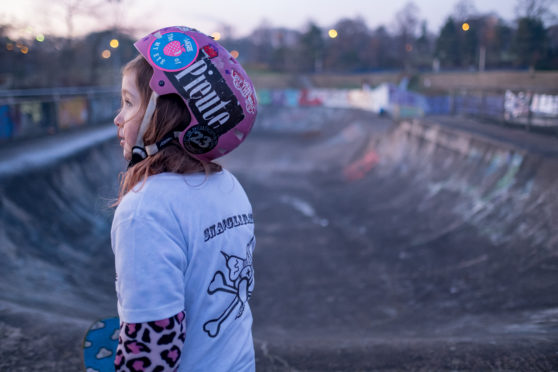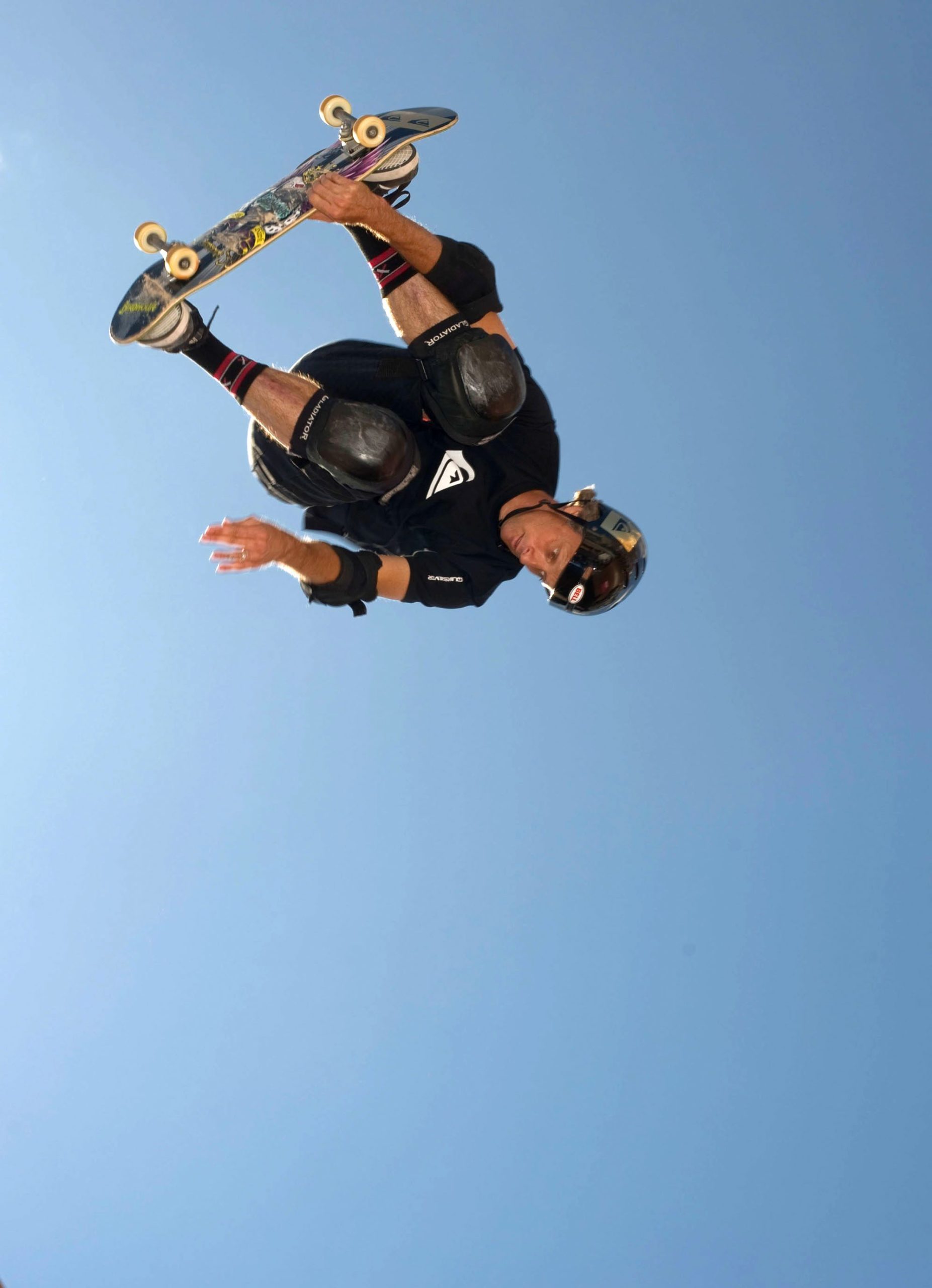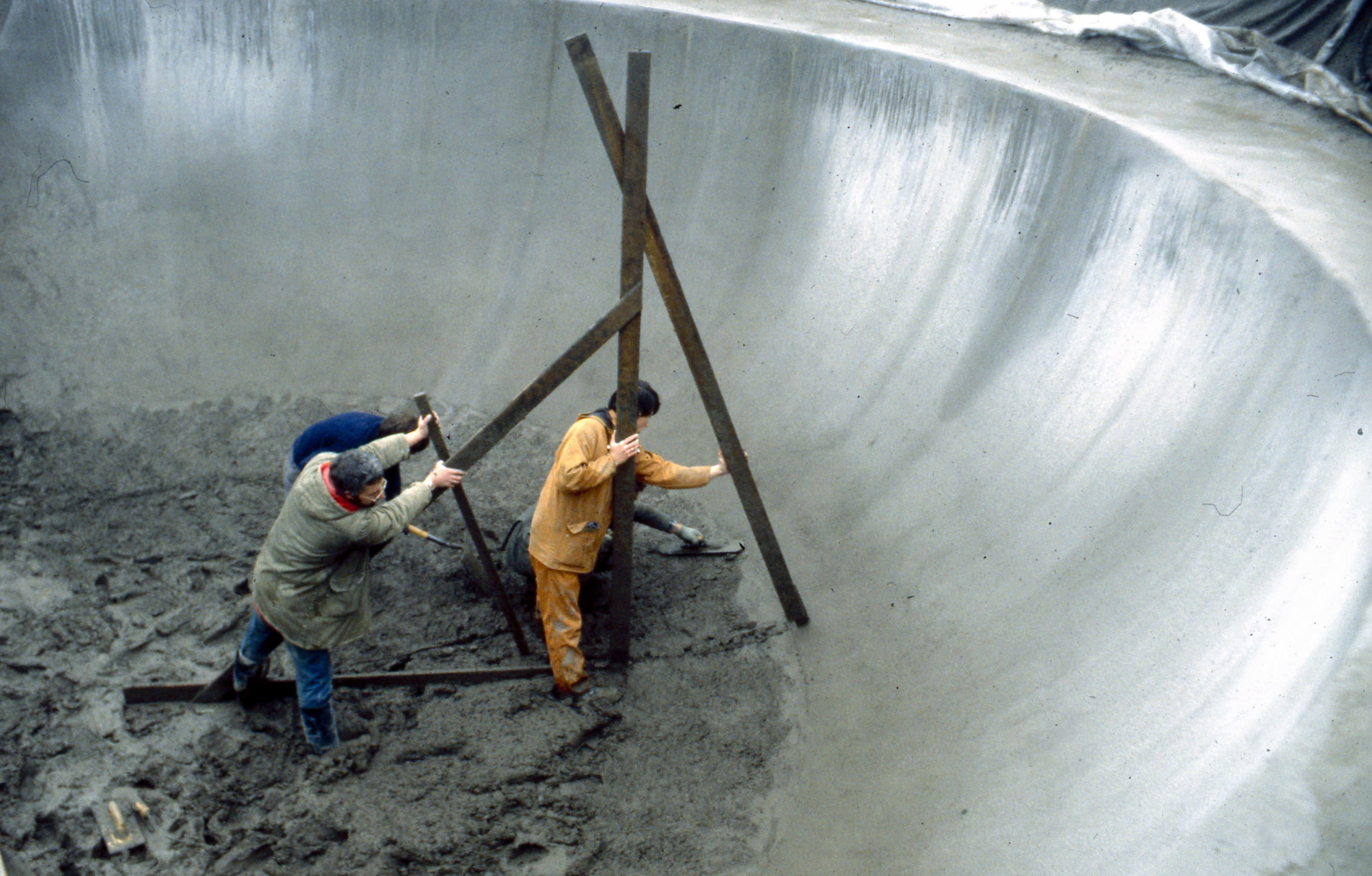
The world’s most famous skateboarder has backed calls for a historic West Lothian skate park to be returned to its former glory as one of the best in the world.
Board legend Tony Hawk says Livingston Skate Park, built in 1981, could become an international attraction and a training ground for the future Olympic stars of the sport if given an upgrade.
And he praised a group of children at the centre of the drive to have the park revived. Hawk, who pioneered modern skateboarding, says Livi, as it was known to generations of skaters from around the world, could draw global skate stars to the once-revered location.
Speaking to The Sunday Post ahead of a new documentary about the skate park, the actor and stuntman said: “If nothing else, Livingston should be honoured as a historical landmark, because it really is a legendary spot.
“The fact that it has even remained through all these decades of skating is something special and it would be amazing to give it an update.
“I think there’s probably a respectful way to do that, by resurfacing it and making it smooth, honouring the original design and updating it in parts so that it’s more in line with what modern skating looks like.
“I don’t think it would be a huge expense, although I don’t know for sure. But the park is something tangible and important, and it could really become a destination skate park.”
Hawk was speaking ahead of a screening of a documentary about a group of children who want to see the park given a new lease of life.
The film Long Live Livi, will be shown at Glasgow Film Festival on Tuesday, followed by a screening on BBC Scotland at a later date.
It features unseen 8mm footage of skaters at Livi, including Hawk, and recalls how the bowl was the brainchild of Iain and Dee Urquhart in 1981. The film then follows a group of next-generation girl skaters dubbed the Snagglerats.
Californian Tony – who drew huge crowds to Livi when he skated there in the late 1980s – also appears in the documentary and recalled his visit to West Lothian.
He said: “It was already an old design by that time, but it was such a legendary place we were just excited to go there.
“Back then the skate community was relatively small, so any facility that survived the run of the 1970s was something you knew about if you were into skating.
“So I knew Livingston, and the legend of it, but I didn’t expect as huge a reaction or crowd for our visit there.”
Now 51, Tony sees the desire of the kids in the film – and their parents, themselves former Livi skaters – to have the bowl improved.
He said: “I identify a great deal. I grew up next to one of the last remaining skate parks in the US, Del Mar Skate Rodeo in San Diego. Even though it was outdated, we were just happy to have a place to go. If you were into skating then you were already set aside as an outcast and it was hard to find your own community.
“So to have the skate park was to find a place to converge and a place you could share ideas and improve your skills.
“That sense of community was so important, especially when the scene got small because there was no support system, there were no companies or magazines… this was the only place we fit in.”
Skating devotees Iain and Dee Urquhart were pivotal in nurturing the Scottish skate scene in 1970s and created Livi in 1981 – the first purpose-built skate park in Scotland. They brought leading skaters Steve Caballero and Mike McGill to the park, watched by thousands. Tragically, Iain died from lung cancer two years after it opened. His niece Parisa Urquhart and colleague Ling Lee directed Long Live Livi.
Having seen a pre-edited cut of the film, Tony is heartened by the desire of the children featured. He said: “It gives me a lot of hope and it shows there’s a new generation, especially of girls, who are inspired to try to skate and aren’t coming up against any sort of prejudice.
“In my day, skating was an outcast activity. To be a girl on that scene it was really difficult to get any sort of validation.
“As skating started to grow like it has in the last 20 years, girls were still the minority, but weren’t treated with respect.
“Now we’ve come so far. These girls in Livingston know skateboarding could be a career. There are opportunities. It’s an Olympic event. I just love that their future is so bright and that they won’t have to overcome those stigmas.
“The film shows the new generation wrestling with old terrain but wanting to keep the heritage and how it’s a place of community and belonging.”
The skate park is a place to be yourself. There is no pressure to conform
To Romany Morrice, whose daughters Rudi, seven, and Mac, six, appear in the film with skater pal Poppie Smyth, Livi is more than just a place for kids to develop their ollies and hardflips.
She said: “I grew up in Winchburgh in West Lothian and we used to go to the Livi when we were younger.
“I wanted my girls to skate and they’re better than I am now.
“We never had much money growing up. It was a treat to get to Livingston and there were a couple of times we walked two hours to get there.
“Skating is about inclusivity, especially when it comes to different classes of society. If you’re a working-class person you can go there and there’s no pressure to have the new stuff, to look good.
“Growing up female there’s a lot of pressure on girls to look and behave a certain way.
“The skate park is a place for you to be who you are and there’s no pressure to conform to what society wants to make you as a female.
“You can go to any skate park in the world and because you skate you’ll be welcomed. People talk to you immediately.
“Your life changes so much when you have children – you hang around with people who go to soft play or ceramic painting, you lose your personality to all that. So letting the girls be involved in skating lets them, and me, have our personality.”
Now Romany – whose daughter Rudi is ex-Scottish Under-18’s skateboard champion – hopes the film helps bolster a desire to see the skate park renovated. However it faces resistance from others who think it should be left as it is.
She said: “Livi has holes, algae, moss and cracks, and the drainage and floodlights don’t work.
“There’s been a bit of push-back from some of the older skaters who don’t want anything done to the park.
“Some pro skaters came out of Livingston in the ’70s and ’80s and skaters from all over the world came here to skate. It was the best in Europe, I think the guys who had that great time there then see it as an ancient monument to skateboarding.
“Indoor skate parks are popping up everywhere, but if I take my kids for two hours it’s £50 and I can’t afford that once a week. The parks are free. Those guys had a great opportunity and wouldn’t it be great if your kids could have that same chance? We could get the park back to how it used to be, and the next generation could excel.”
Long Live Livi, part of the Glasgow Film Festival, is on at the CCA on Tuesday at 6pm

Enjoy the convenience of having The Sunday Post delivered as a digital ePaper straight to your smartphone, tablet or computer.
Subscribe for only £5.49 a month and enjoy all the benefits of the printed paper as a digital replica.
Subscribe © Andrew Hasson/Shutterstock
© Andrew Hasson/Shutterstock 